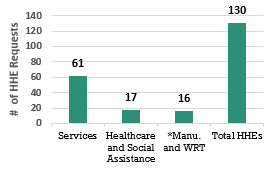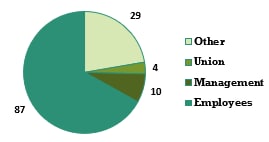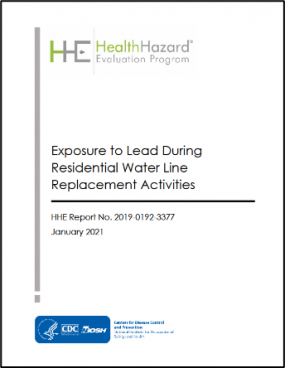Health Hazard Evaluation Program PPOP
The National Institute for Occupational Safety and Health (NIOSH) Health Hazard Evaluation (HHE) Program evaluates potential workplace hazards through field visits and consultations requested by workers, unions, and employers. Based on investigation findings, the HHE Program provides recommendations to improve the health and safety of the U.S. workforce. The HHE Program aims to:
- Reduce or eliminate hazards and prevent work-related illnesses
- Identify new and emerging hazards
- Complete timely, high-quality investigations that meet requestors’ needs.
- Make and promote relevant, feasible, and effective recommendations to prevent adverse effects of workplace health hazards.
- Raise awareness about occupational hazards, emerging issues, and recommended controls through HHE reports, trade publications, meetings, social media, and scientific publications.
- Encourage HHE Program requests:
- From various groups, including small businesses, labor unions, local health departments, and underserved worker populations.
- That address emerging occupational health problems.
- That are likely to apply to many workplaces.
- Encourage research on emerging hazards identified by HHE investigations.
- Published 7 new HHE reports in 2021, including reports related to:
- Metals Exposure and Perceived Excess Cancer in a Train Maintenance Facility
- Exposure to Opioids in a City Police and City Fire Department
- Exposures to Styrene During Cured-in-Place Pipe Installation
- Completed an initial site visit at a facility that manufactures engineered stone and epoxy lab countertops where exposures to respirable silica and phthalic anhydride are a concern.
- Evaluated a facility with concerns about ergonomic risk factors and musculoskeletal injuries during aircraft parts distribution job tasks.
- Published a peer-reviewed article on occupational respiratory and skin diseases among workers exposed to metalworking fluids.
- Supported the CDC coronavirus disease 2019 (COVID-19) response by visiting 35 workplaces and providing technical assistance to health departments to mitigate the spread of the virus that causes COVID-19.
- Respond to an anticipated 200 HHE and technical assistance requests in 2022.
- Continue supporting the COVID-19 response to help prevent the spread of the virus that causes COVID-19 among workers.
- Evaluate concerns about COVID-19, musculoskeletal disorder risks, and peracetic acid exposures at two pork processing facilities.
- Assess noise exposures in a metal working facility.
- Evaluate potential exposures to methamphetamine in a toxicology lab.
- Characterize exposures during steel welding and grinding at a shipbuilding facility.

Mention of any company or product does not constitute endorsement by the National Institute for Occupational Safety and Health, Centers for Disease Control and Prevention
The Health Hazard Evaluation Program evaluates workplace exposures & health effects potentially related to hazardous exposures among workers. This snapshot highlights recent accomplishments & upcoming activities.

* Manufacturing and Wholesale and Retail Trade (tie) Source: NIOSH program records

Source: NIOSH program records
To learn more, visit
www.cdc.gov/niosh/hhe/
August 2022

